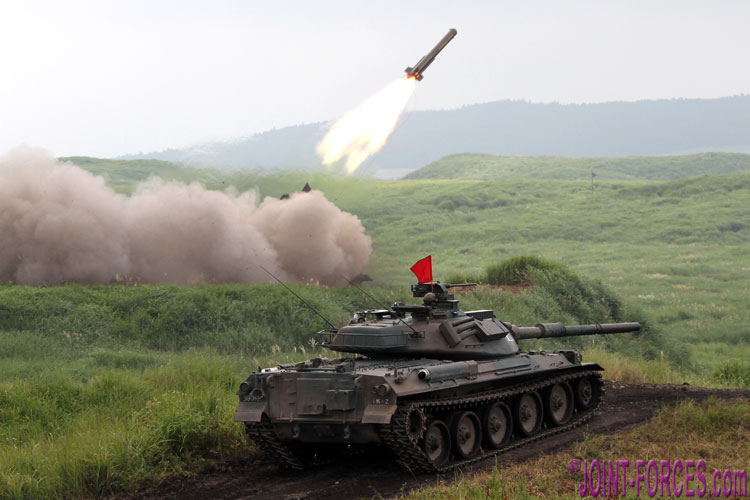In this two-part feature Gordon Arthur focuses on the wheeled and tracked vehicles used by the Japan Ground Self-Defense Force or JGSDF.
Under the cover of darkness, the company of Type 74 tanks from the 2nd Division of the Japan Ground Self-Defense Force quietly moved into position on the bluff overlooking the sandy beach on the island of Hokkaido. Their unique hydro-pneumatic suspension systems allowed them to nestle down amongst the long beach grass until they were almost completely hidden from view, their green and brown camouflage paint providing perfect concealment. The 105mm gun barrels of these tanks were pointing directly towards the ocean as the crews settled down to await the arrival of the Soviet armada expected to coincide with the breaking of dawn. These Japanese tanks, with their well-rounded turrets, were helping form one of Japan’s first lines of defence against the communist juggernaut crossing the Sea of Japan from Vladivostok and Russia’s Far East.

The Type 78 Snowcat is operated only in units stationed in northern Japan where snowfalls are heavy – it is not armoured and is used for transportation of up to twelve troops or 1,000kg of cargo [© GA]

This is a tracked armoured engineer vehicle introduced by the JGSDF in 1999 – it features a front-mounted dozer blade and a hydraulic shovel [© GA]

The Type 90 armoured recovery vehicle was designed to assist recovery and repair of the Type 90 MBT – it has a towing capacity of 50 tons and its crane can lift 25 tons [© GA]
To be continued…
{ images © Gordon Arthur }
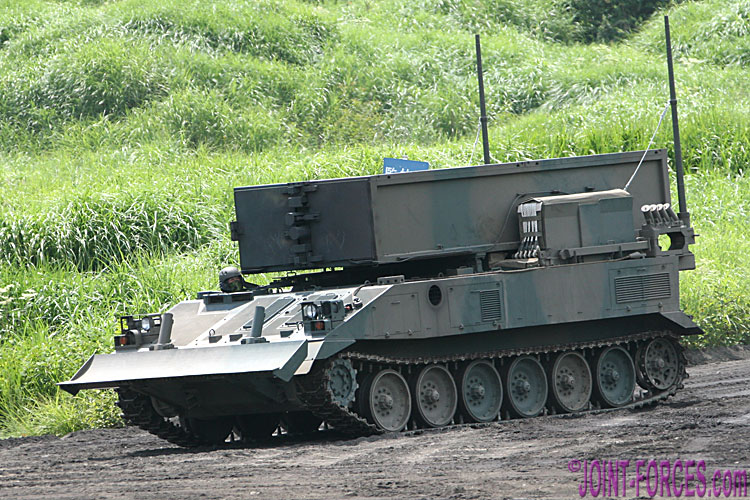
The Type 92 Minefield Clearance Vehicle (MCV) was produced by IHI Aerospace Company it carries two rocket projectiles trailing explosive-filled wires that are detonated to clear a path through a minefield [© GA]

This is Japan’s licence-built version of the M110A2 – a total of 91 of these SPHs equipped with a 203mm gun were produced – behind it is a Type 87 ammunition supply vehicle [© GA]

The Type 87 Antiaircraft Automatic Weapon entered JGSDF service in 1987, and a total of 52 units were produced up until 2002 – the 44-tonne vehicle features a pair of 35mm Oerlikon KDA cannons [© GA]
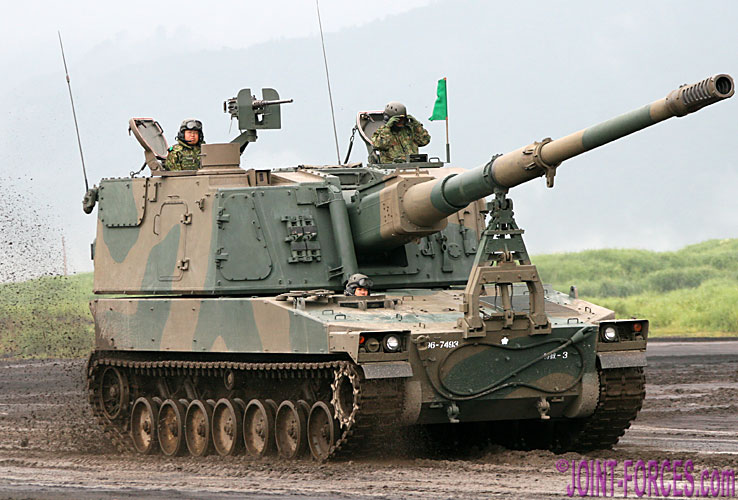
The 40-ton Type 99 SPH is Japan’s newest howitzer – the 52-calibre 155mm gun fitted with an autoloader offers a maximum firing range of more than 30km [© GA]
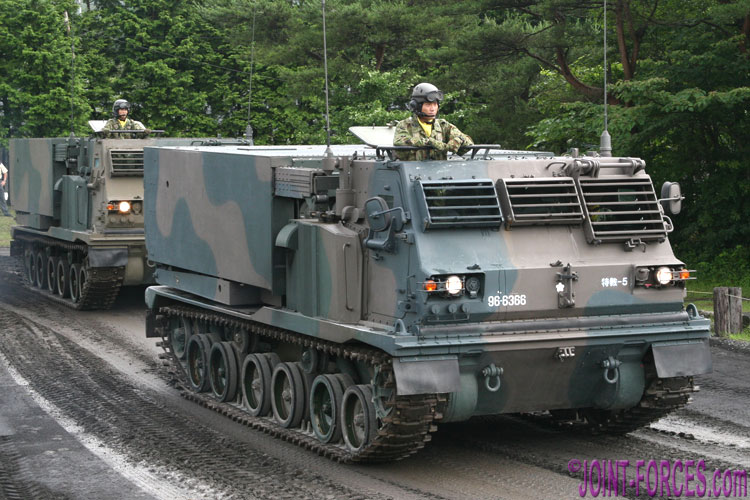
The M270 Multiple Launch Rocket System (MLRS) joined the JGSDF inventory in 1992 – again Japan opted for licensed production with IHI Aerospace Company being the contractor [© GA]
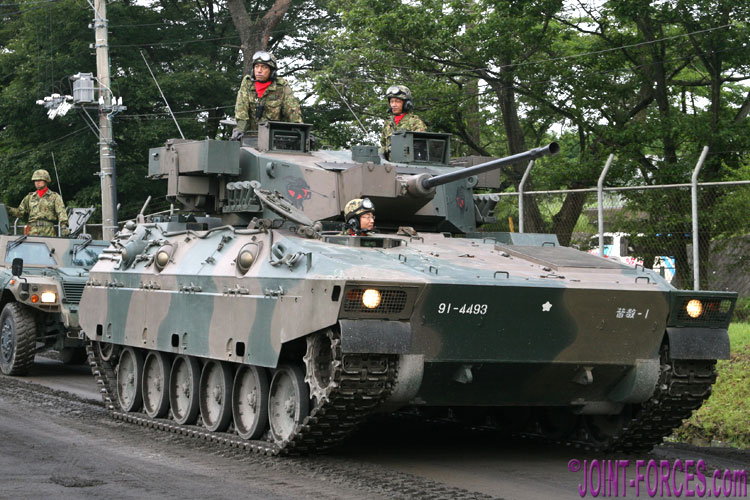
The only IFV operated by the JGSDF is the Type 89 Fighting Vehicle (FV) – the 89FV weighs 26.5 tons and is powered by a 600hp diesel engine [© GA]
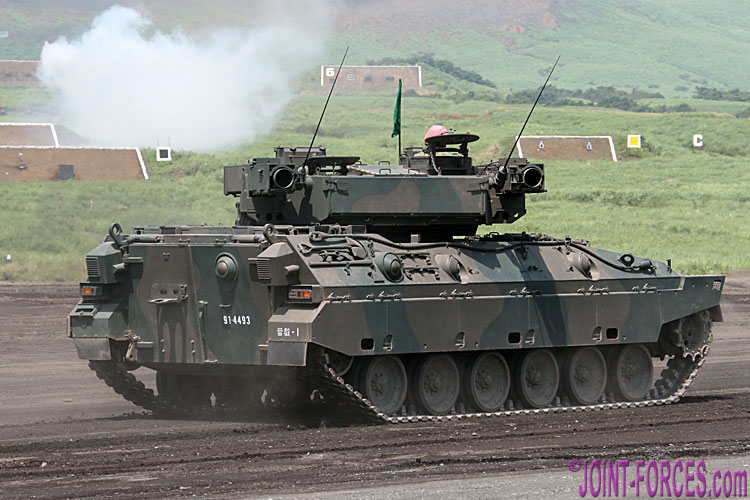
The 89FV is built by Mitsubishi Heavy Industries – a crew of three operates the IFV, and seven passengers are carried in the rear compartment [© GA]
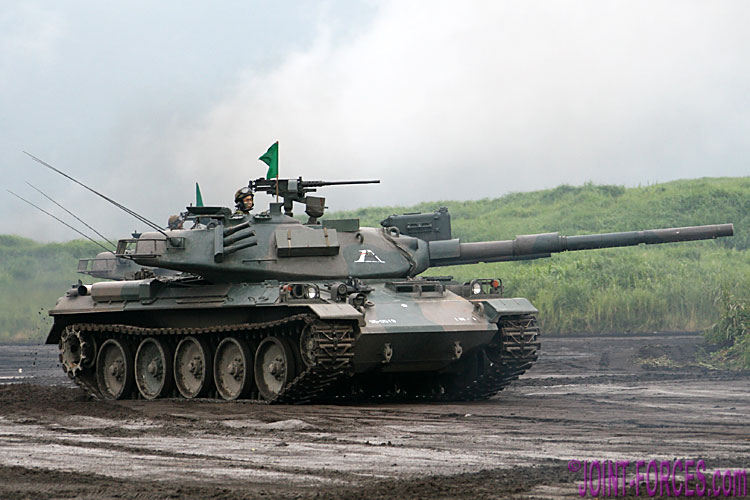
Gradual retirement of the Type 74 tank began in 1999, though a significant number are still in service – a rifled 105mm gun is the tank’s main armament [© GA]
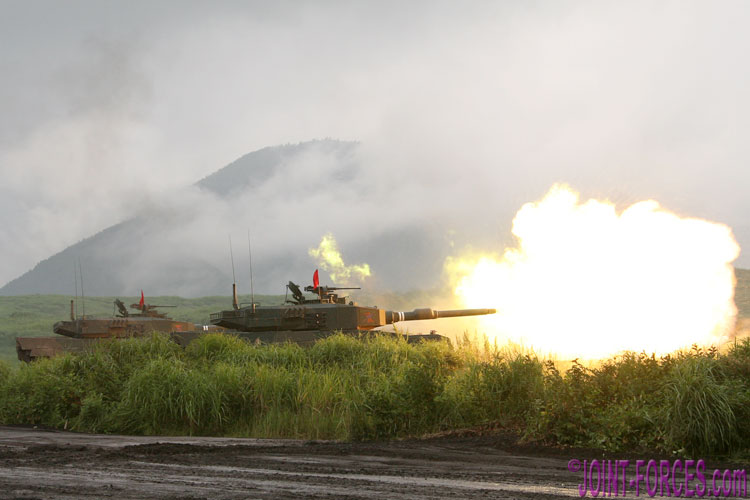
Type 90 tanks fire at the spectacular Fuji Firepower event that is held annually – the MBT is armed with a licence-built 44-calibre 120mm smoothbore gun designed by Rheinmetall [© GA]
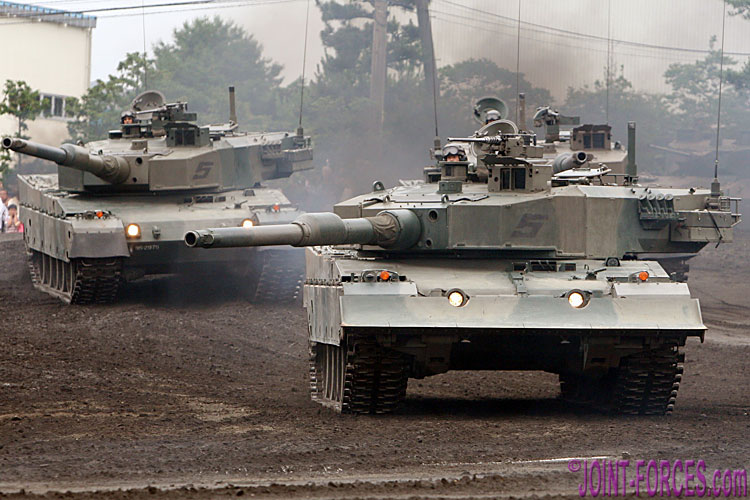
A pair of Type 90MBTs manoeuvres at Camp Fuji, with the one on the right fitted with a dozer blade – this platform is propelled by a 1,500hp supercharged and turbocharged Mitsubishi 10-cylinder diesel engine [© GA]
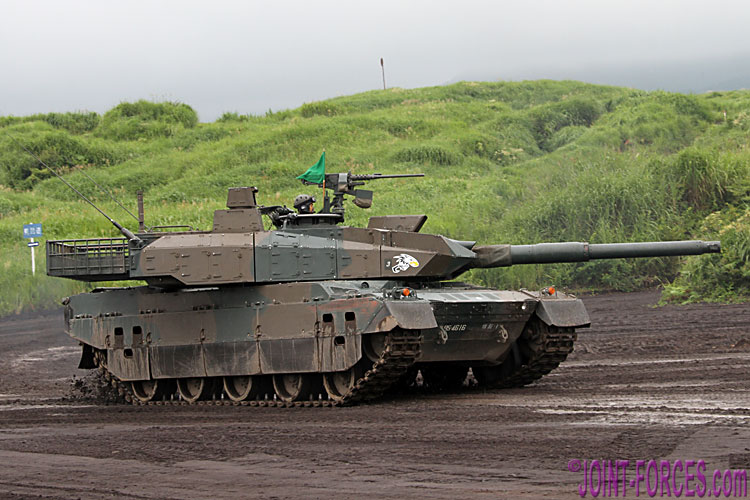
The newest MBT in the JGSDF is the Type 10 tank – development commenced in 2002 and it entered serviced in 2011 – it weighs 44 tons and possesses a 120mm L/44 main gun [© GA]


